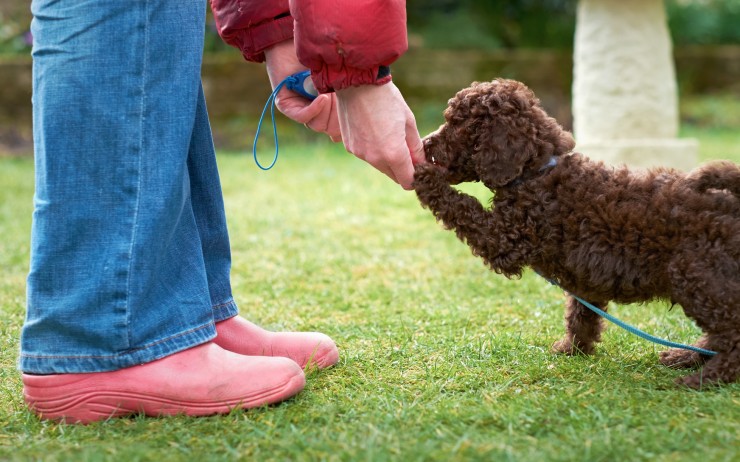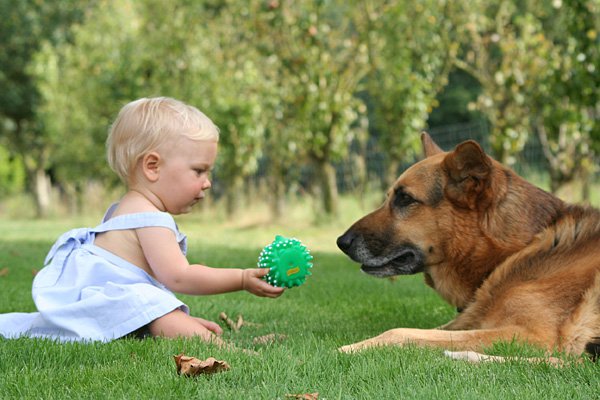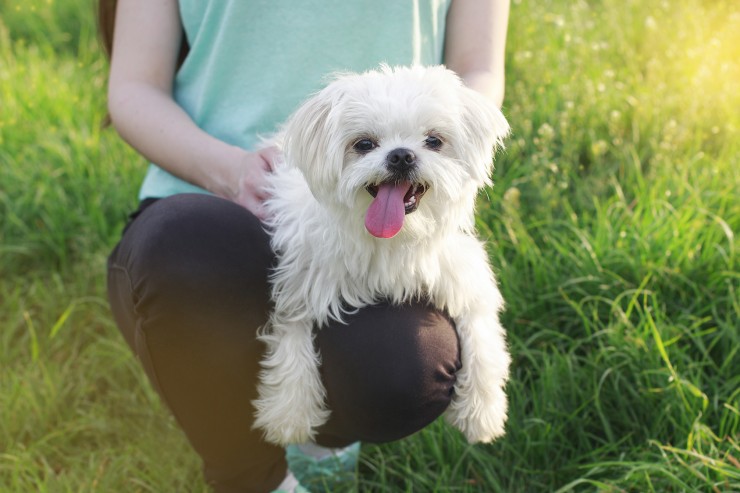
Sometimes a person just needs a little space. Usually we find respite in our bedrooms or in that special room at home that is just for us. Maybe it's the garden. But where does a dog go when he needs a little space? In the end, your house is your home and your dog is simply another occupant.
Enter the dog crate. This can be a regular dog kennel, a small wire fence, or even just a special area that your dog can call its own. In any case, it should be able to be closed off. You will be creating a space that your dog can call its own, a special space that your dog can go when he needs to be away from everyone, or a space that he can feel safe if, say he is escaping the vacuum cleaner or another frightening household noise.
The idea behind the crate is that it appeals to your dog's instinct for den building. The ancestors of the dog are all den diggers and use the space as a safe zone where they can hide from danger or protect their pups. A dog, while not having as many threats or dangers in its life, still values that safe place.
The benefits of having a crate for your dog are many and varied. From your dog's perspective, he will have a safe place to avoid the stress of other areas of the house. From your perspective, you will have a place to put your pet if guests are coming who may not appreciate your dog, your dog will become house trained more quickly as he will not want to soil his crate or den, and you will have a convenient way to transport your dog. If you need to fly and your dog has never spent time in a kennel before, the flight will be terribly stressful. If your dog understands his crate to be his special place, he will be more (though not entirely) comfortable while in the air.
You will have several options when selecting a crate for your dog. You can choose between plastic, collapsible fabric, and metal cage-type crates. Most important is that the crate should be the right size for your dog. Fido should be able to stand up and turn completely around easily when the crate is closed.
Next, consider what the crate will be used for. Will you be taking your pet on flying trips? Will he be riding in the car? Your pet store associate will be able to help you choose the right crate.
Before we get into the methods, a few words of caution. Your dog's crate is your dog's own special place in the house. It should always be a good place to be and should never be used for punishment. You must also remember that dogs of different ages will be able to stand different amounts of time in the crate. Puppies and very old dogs may not be able to hold their bladders for very long.
How to Crate Train Your Dog
Begin by leaving the crate out in a place your dog can't miss. Allow him to explore it at his leisure. You may choose to put a cushion or other soft surface on the bottom. After a little while, begin to put your dog's food near the kennel, slowly moving it to just inside the door. The goal is that your dog will eventually take his meals in the kennel without fear.
While your dog is in the crate, close the door briefly before opening it again, gradually prolonging the amount of time your dog spends with the door closed. In the beginning, stay close to the kennel so your dog can see you, but as time goes on, move out of view and earshot.
Between mealtimes, try to get your dog to go into the crate willingly. Every time he enters, be sure to praise him and give him a treat.
Eventually your dog should become comfortable staying in the crate for at least half an hour. At this point you might try keeping him in the crate over night or while you leave the house briefly.
Some dogs will whine while in their crates. Try to figure out if your dog needs to be let out to relieve himself or if he is simply whining to be let out. If it's the former, let him out and put him back in once he's finished. Otherwise, simply ignoring the whining is the best option. Be sure you don't reward your dog for whining.
It is common for dogs to get jealous of their owners. They may try to break up a hugging couple or bark for attention when you are not giving them any. To learn more about canine health care and canine dog supplies, visit us at CanineTouch.com.
 Turkish Angora And Hereditary Health Issues
Turkish Angora An
Turkish Angora And Hereditary Health Issues
Turkish Angora An
 Five More Dog Training And Handling Mistakes To Avoid
Five More Dog Tra
Five More Dog Training And Handling Mistakes To Avoid
Five More Dog Tra
 All about Goldendoodle Puppies for Sale
All about Goldendoodle Puppies for Sale
Any pu
All about Goldendoodle Puppies for Sale
All about Goldendoodle Puppies for Sale
Any pu
 Why Is My Cat Losing Weight? - The 5 Main Reasons
Why Is My Cat Los
Why Is My Cat Losing Weight? - The 5 Main Reasons
Why Is My Cat Los
 Maltese Dogs - Reverse Sneezing And Collapse Tracheas
Maltese Dogs - Re
Maltese Dogs - Reverse Sneezing And Collapse Tracheas
Maltese Dogs - Re
Copyright © 2005-2016 Pet Information All Rights Reserved
Contact us: www162date@outlook.com